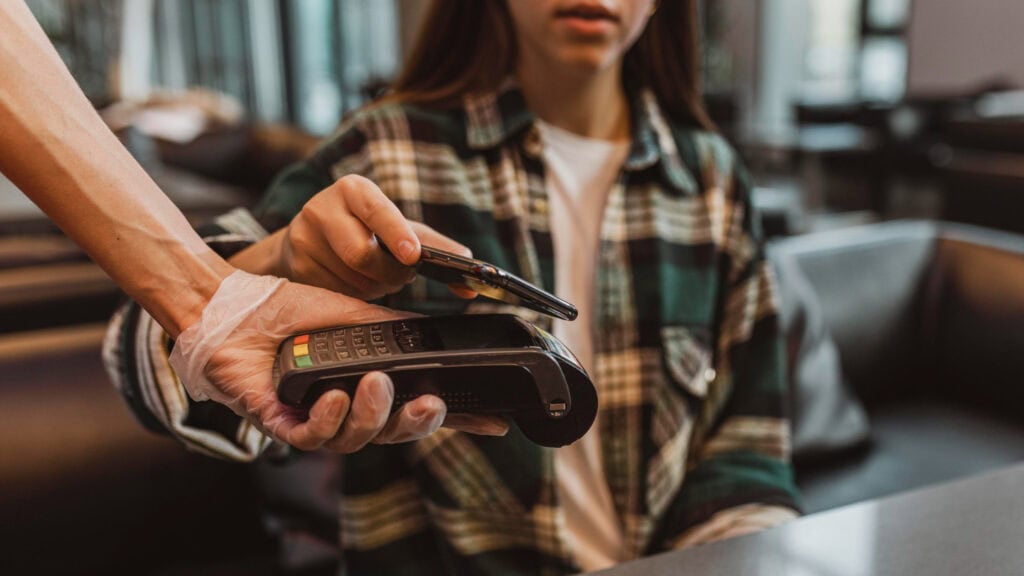
By Zackary Rhodes May 30, 2025
Nonprofit organizations operate with a mission-driven focus, aiming to support communities, drive social change or provide services where they are needed most. However, in the digital age, these organizations are not immune to financial threats. With online donations becoming a primary source of revenue, charity payment security has never been more important. Fraud and chargebacks can significantly impact nonprofits. A single fraudulent transaction can result in lost funds, processing fees and reputational damage. Repeated issues can lead to increased scrutiny from donors and payment processors. In worst-case scenarios, a nonprofit may lose its ability to process online payments altogether.
For 501(c)(3) organizations, managing this risk means putting effective systems in place for nonprofit chargeback prevention and fraud protection 501c3 compliance. Fortunately, with the right approach and awareness, nonprofits can reduce the risk of chargebacks and protect donor trust while maintaining a smooth donation experience.
Understanding Chargebacks in the Nonprofit Context
When a donor disputes a transaction with their credit card issuer, they file a chargeback. If the bank thinks the charge was fraudulent, unauthorised, or misinterpreted, it may grant the donor’s request for a reversal. Chargebacks are started by the donor’s bank, in contrast to refunds, which are handled voluntarily by the organisation. The amount of the donation is taken out of the nonprofit’s merchant account when a chargeback is submitted, and the payment processor usually charges a fee. The funds are lost forever if the nonprofit is unable to demonstrate that the transaction was legitimate.
In the world of nonprofits, chargebacks can be especially frustrating. Many organizations rely on the good faith of their supporters and may not have the same verification processes as e-commerce businesses. Donors may forget they made a recurring gift, dispute charges for events or misinterpret how their donation was categorized. To strengthen nonprofit chargeback prevention, organizations must understand why chargebacks happen and put proactive measures in place to minimize them.
Common Causes of Nonprofit Chargebacks
Several factors can trigger chargebacks in charitable transactions. Some are rooted in fraud, while others are due to confusion or miscommunication. The most frequent causes include:
- Unrecognized charges. A donor may see the nonprofit’s name on their credit card statement and not remember the donation, especially for recurring gifts or if the name appears differently than expected.
- Duplicate donations. Donors may accidentally click twice or submit the same form more than once, especially if the site is slow to respond. Seeing multiple charges, they dispute one or all as a mistake.
- Unauthorized use. Credit card fraud can lead to charges being made in a donor’s name without their consent. When the cardholder reports the fraud, any donations made with their information are reversed.
- Dissatisfaction or misunderstanding. A donor may believe the funds were not used as promised or misunderstand the terms of a campaign. This can result in a dispute if they feel misled.
- Delayed or missing receipts. If a donor does not receive a confirmation or receipt, they may assume the transaction did not go through or suspect fraud, especially in online campaigns.
Recognizing these patterns allows nonprofits to adapt their systems and improve fraud protection 501c3 strategies.

Building a Secure Donation Process
Securing the donation process starts with the payment page. A well-designed, secure, and user-friendly donation form reduces errors, prevents fraud and instills donor confidence. Using a reputable payment gateway is the first step toward charity payment security. Trusted processors offer tools like address verification, CVV matching and tokenization to protect sensitive card data. These features help prevent unauthorized transactions before they happen.
Confusion is decreased by using clear and consistent branding on both the donor’s bank statement and the donation page. When transaction details are as expected, donors are less likely to contest charges. Trust is also increased by including the nonprofit’s logo, contact details, and donation goal on the form. Giving donors who desire transparency a breakdown of how their money will be used can help to minimise disagreements.
A secure donation process should also confirm the transaction immediately with a detailed receipt. This helps avoid chargebacks due to missing confirmations or duplicate attempts.
Recurring Donations and Transparent Communication
Recurring donations are an important revenue stream for many nonprofits. They provide reliable cash flow and deepen donor engagement. However, they also come with chargeback risk if the donor forgets about the automatic payments.
Being open and honest is crucial to lowering nonprofit chargeback prevention problems with recurring gifts. When establishing a recurring donation, donors should be made fully aware of the frequency, amount, and way to modify or cancel their preferences. Reminder emails sent out prior to each billing cycle can help keep things transparent and minimise surprises. By informing the donor of impending charges, these reminders act as a communication tool and a fraud prevention measure.
Easy cancellation options also reduce chargeback risk. If donors cannot find how to cancel or reach someone to help, they may go directly to their bank to dispute the charge. Empowering donors to manage their own giving reduces the chance of this happening.
Addressing Fraud Attempts Head-On
Fraud targeting nonprofits is often subtle and sophisticated. Since donations are not tied to physical shipments, it is easier for fraudsters to use stolen credit card data to test transactions. A single nonprofit may be targeted to verify hundreds of stolen cards in a short time.
To strengthen fraud protection 501c3, nonprofits should monitor donation activity for unusual patterns. A spike in small donations from the same IP address or variations of the same email address may indicate fraud. Setting rate limits and using CAPTCHA tools can prevent bots from submitting multiple donations quickly. Real-time fraud filters from your payment processor can flag high-risk transactions based on geography, card history or known fraud patterns.
Manual review of large or unusual donations is also important. If an anonymous donor suddenly gives an abnormally large amount, staff should investigate before processing. In many cases, genuine donors will not mind a follow-up call for verification. Adding two-factor authentication to donor accounts, especially for recurring giving platforms, adds another layer of security and reduces the risk of unauthorized use.
Responding to Chargebacks Effectively
Despite the best prevention efforts, some chargebacks are inevitable. How your nonprofit responds can make a difference in recovering funds and preventing future issues.
React promptly to chargeback notifications. The majority of processors have a due date for documentation submission. The donor’s name, the date and amount of the donation, the transaction ID, and any correspondence or receipts are usually included in this. Records must be kept in order. Save donor correspondence, event registration information, and email confirmations. These documents aid in demonstrating the validity and authorisation of the transaction.
If the donor is known to your organization, reach out directly. Sometimes a simple explanation resolves the issue and they may withdraw the dispute. This is also a chance to rebuild trust and clarify any confusion. Even when a chargeback cannot be reversed, the case provides valuable insight. Reviewing the circumstances helps adjust your systems, improve communication or update your donation forms to avoid similar issues in the future.
Training Your Team and Volunteers
Nonprofit teams often include a mix of staff, contractors and volunteers. Everyone involved in handling donations, event registration or donor communication should understand basic principles of charity payment security. Training should include how to recognize suspicious transactions, how to verify donor identities when needed and how to respond to inquiries about charges. A clear policy on handling refunds and disputes helps ensure consistency and reduces the chance of chargebacks due to miscommunication.
Volunteers assisting with events or phone-based donations should be trained to collect accurate information and follow secure data handling practices. Paper records must be stored securely and destroyed properly after use. Establishing a culture of security within your team builds accountability and supports your broader mission of trust with donors.
Building Donor Trust Through Transparency
One of the most effective tools in nonprofit chargeback prevention is trust. Donors who feel informed, respected and valued are less likely to dispute charges. Trust is built through transparency, clear communication and consistent engagement.
Make the terms of the donation clear and easy to find. Steer clear of vague descriptions or hidden costs. Give contributors the option to receive updates in the future or to pay processing fees. Educate donors on the use of their funds. Frequent newsletters, campaign updates, and thank-you notes help to lower the likelihood of disputes fuelled by dissatisfaction and to reinforce the importance of their contribution.
When donors change addresses or billing methods, guide them on updating their details to avoid billing issues. Having a visible and responsive customer support system encourages donors to reach out with concerns before escalating to chargebacks. Even small gestures like handwritten thank-you notes or donor recognition on your website can make a lasting impression and deepen loyalty.
Choosing the Right Technology and Partners
The tools you use to process payments, manage donor data and run campaigns play a central role in fraud prevention. Choosing platforms that prioritize charity payment security ensures you are working with partners who share your responsibility. Look for payment processors with nonprofit experience. These providers understand the unique risks and opportunities for 501(c)(3) organizations and often offer specialized tools like donor portals, recurring billing and automated fraud filters.
In addition to offering a transparent audit trail of communications, transactions, and campaign history, your donor management system should seamlessly interface with your payment processor. This integration streamlines recordkeeping and aids in dispute resolution. Updating software and conducting routine audits are two aspects of 501c3 fraud protection. Maintaining your systems’ resilience requires keeping up with the most recent security threats and compliance regulations. Consulting with consultants or financial experts who focus on nonprofit finance can also yield insightful information about fraud prevention and risk management tactics.

Planning for Future Growth and Risk Reduction
As your nonprofit grows, so will the volume and complexity of your transactions. Planning ahead ensures that growth does not come with greater exposure to fraud or chargebacks. Regularly review your payment policies, donor forms and security protocols. Make updates as new tools become available or as donor behavior evolves.
Invest in scalable systems that can handle increased traffic during campaigns or giving seasons. Spikes in donations are common during year-end appeals or emergency response campaigns, and these periods are also prime times for fraud attempts. Create a plan for handling large or unexpected donations. Establish verification procedures for gifts over a certain amount, and keep your team trained on how to respond.
By embedding nonprofit chargeback prevention into your planning process, you create a resilient infrastructure that supports long-term success.
Conclusion: Secure Systems Support Your Mission
Donors contribute because they support your mission. Protecting their trust is just as important as protecting their donations . For this reason, any organization’s financial plan should include nonprofit chargeback prevention, 501c3 fraud protection, and charity payment security. You can lower the risks that could damage your reputation and financial results by developing secure systems, educating your staff, and keeping lines of communication open with donors. Clear policies, dependable tools, and quick responses all aid in resolving conflicts and preventing them altogether. Nonprofits that put security and trust first will stand out in a world where digital giving is only going to get bigger. They will do more, raise more money, and build closer bonds with the communities they serve.